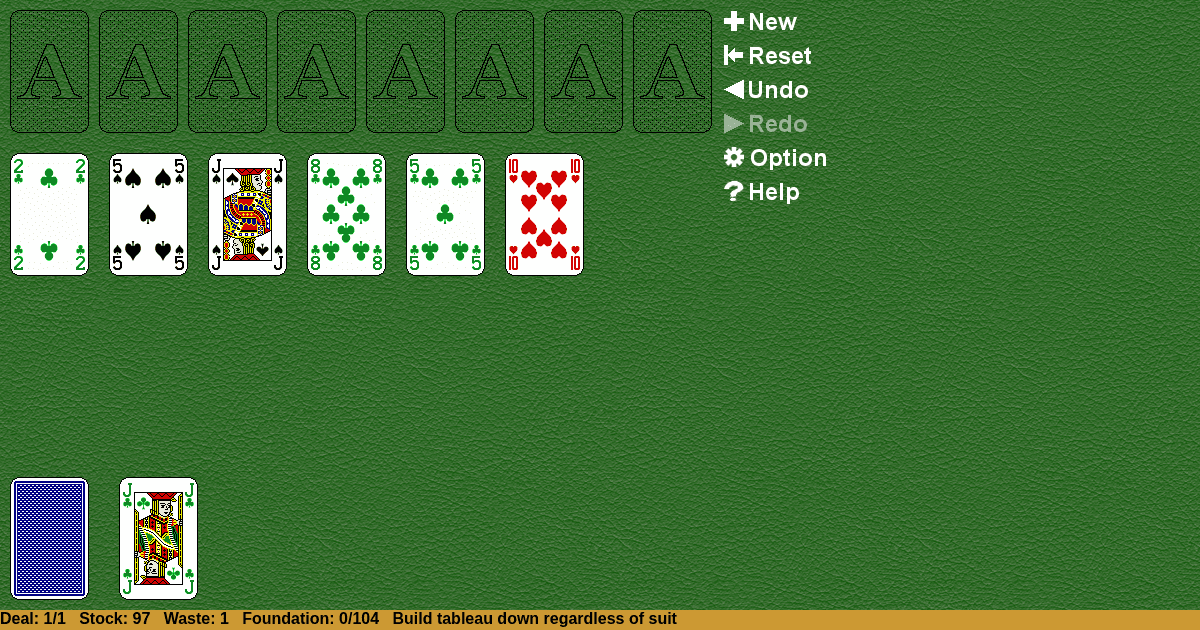Waterloo
Home |
How to play |
FAQ |
About
How to play Waterloo?
Game Objective:
The primary goal in Waterloo Solitaire is to defeat the opposing army (either Allied or French, depending on your chosen side) by successfully executing tactical actions that eliminate enemy units and achieve battlefield dominance before the end of the game.
Setup & Layout:
- Deck Used: The game utilizes a specialized deck with action cards representing military formations and tactics for both the French and Allied sides. The exact composition may vary between editions; consult your specific rulebook for card details.
- Initial Arrangement:
- Each player (you, as either Napoleon or Wellington) begins with a hand of six cards corresponding to their side.
- The play area is divided into key zones representing battlefield sectors:
- Left Wing
- Right Wing
- Reserve
- Core Formations (e.g., artillery, cavalry, infantry)
- All cards in hand are face-up to the player; the BOT’s actions are determined by die rolls and reference charts.
- Key Play Areas Defined:
- Tableau: The main area where cards representing formations are played and interact.
- Discard Pile: Used for spent or eliminated cards, which may be referenced for special actions.
- BOT Action Chart: Used to resolve the autonomous opponent’s moves via dice rolls.
Waterloo Solitaire Rules:
- Fundamental Principles:
- On each turn, you may play one action card from your hand to command a formation or execute a tactic.
- You may use Combined Arms Tactics by playing a supporting card, which can modify the outcome of your main action (e.g., add a die roll modifier for attacks).
- After your action, roll a die to determine the BOT’s response according to the BOT Action Chart, which may result in attacks, defenses, or tactical events.
- Building Sequences:
- Actions and attacks are resolved by matching formation cards to battlefield sectors (e.g., using cavalry to attack a wing).
- Some actions require specific conditions, such as attacking only when certain enemy units remain or using artillery in support.
- Movement Conditions:
- Cards may be moved from hand to tableau if their action is legal for the current battlefield situation.
- Certain special actions allow you to retrieve cards from the discard pile, provided the formation has no cards in hand and still has units on the board.
Gameplay:
- Turn Sequence:
- Play one card from your hand to execute a formation action.
- Optionally play a supporting card for Combined Arms Tactics.
- Roll a die and consult the BOT Action Chart to resolve the opponent’s move.
- Apply the results of both your action and the BOT’s response (unit eliminations, tactical changes).
- Draw cards equal to the number played, maintaining a hand of six cards at the end of each turn.
- Advance the turn marker and begin a new round.
- Introducing New Cards:
- Cards are replenished from the draw pile at the end of each turn to restore your hand to six cards.
- No Legal Moves:
- If you cannot play any legal action card or the BOT’s moves render further play impossible, the game may be lost or stalled, depending on the scenario.
Winning & Losing Conditions:
- Winning:
- You win by eliminating all opposing units or achieving the scenario’s victory conditions before the game ends (usually determined by a set number of turns or specific tactical objectives).
- Losing/Unwinnable State:
- The game is lost if your army is eliminated, you cannot make any legal moves, or the BOT achieves its victory conditions first.
- Running out of cards or being unable to execute required actions also results in a loss.
Special Rules & Edge Cases:
- Filling Empty Spaces:
- If a formation has no cards in hand but still has units on the board, you may use a special action to retrieve a card from the discard pile for that formation.
- Unique Restrictions:
- Some actions are restricted by battlefield conditions (e.g., cavalry can only attack certain wings, artillery requires support).
- The BOT may “form a square” or gain defensive bonuses if attacked by cavalry, as indicated by the BOT Action Chart.
- Die roll modifiers (DRM) from Combined Arms Tactics or battlefield conditions can significantly affect the outcome of attacks and defenses.
- If a key formation is eliminated, certain actions may become unavailable for the remainder of the game.
Note: This guide synthesizes the core gameplay mechanics of Waterloo Solitaire as described in official sources and observed playthroughs. For precise card details or scenario-specific rules, consult the official rulebook included with your edition.

Solitaire Collection
About Waterloo
Rate (Waterloo)
4.7 / 5
1,916 votes



























































